.webp?2025-12-17T15:00:29.367Z)
Spotify Wrapped ideas make stats lovable

Content
Top 10 Travel Marketing CampaignsCampaign 10: "Get Out There" - KayakCampaign 9: "Travel Yourself Interesting" - ExpediaCampaign 8: "The Airbnb Concerts" - AirbnbCampaign 7: "Do it for Denmark" - Spies TravelsCampaign 6: "Unborder" - Scandinavian Airlines (SAS)Campaign 5: "Spend Your Days Off" - Project: Time OffCampaign 4: "You’re Not You When You're Hungry" - Snickers AustraliaCampaign 3: "Live There" - AirbnbCampaign 2: "Shot on iPhone 6" - AppleCampaign 1: "It's More Fun in the Philippines" - Department of Tourism PhilippinesTop 10 Travel Marketing Campaigns & Innovations
Karina
Author @ InAppStory
This article revisits ten travel campaigns that shaped how travellers discover destinations, compare options, and make decisions. Despite their differences, the most successful campaigns share a set of patterns: they reduce uncertainty, help people imagine their experience, and offer a believable path from inspiration to action.
A recent example is HomeExchange’s “Year in Review” mobile campaign, which reached over 26,000 users, achieved a 66.9% open rate and 100% completion, and demonstrated how personalized storytelling can boost connection and visibility without paid media.

The following sections explain why these mechanics work, how they align with real traveller jobs, and how travel brands can adapt them today.
Seven Mechanics Behind Successful Tourism Advertising
When you analyse these campaigns together, seven mechanics appear again and again. Emotion is usually the first entry point: curiosity, belonging, humour or nostalgia draw people into the story long before they think about logistics. The next anchor is credibility. Campaigns grounded in real travellers, real images, or actual behaviour like HomeExchange’s personalised recaps reduce uncertainty and make the idea of visiting feel less abstract.
Cultural specificity plays a role as well. Destinations resonate when their personality is clear, not generic. Interaction is increasingly important; formats that allow users to tap, compare, or explore keep them engaged for longer and make the imagined journey feel more tangible. Strong campaigns also minimise friction between inspiration and the next step, whether that next step is checking dates, saving a trip, or sharing content. Many successful ads speak clearly to a specific traveller type instead of trying to reach everyone at once. And behind it all lies a human insight — a truth about how people behave when they dream about travel or avoid it.
The HomeExchange example illustrates several of these mechanics at once: emotional relevance, data-driven authenticity, built-in shareability, and localisation across five languages.
Top 10 Travel Marketing Campaigns
Successful travel campaigns simplify the traveller’s decision-making process. They create an emotional connection, use credible and relatable storytelling, highlight cultural specificity, and offer a clear next step—from inspiration to booking. Campaigns that combine these elements consistently outperform generic destination ads, especially when personalised or interactive formats are involved.
Campaign 10
Get Out There - Kayak
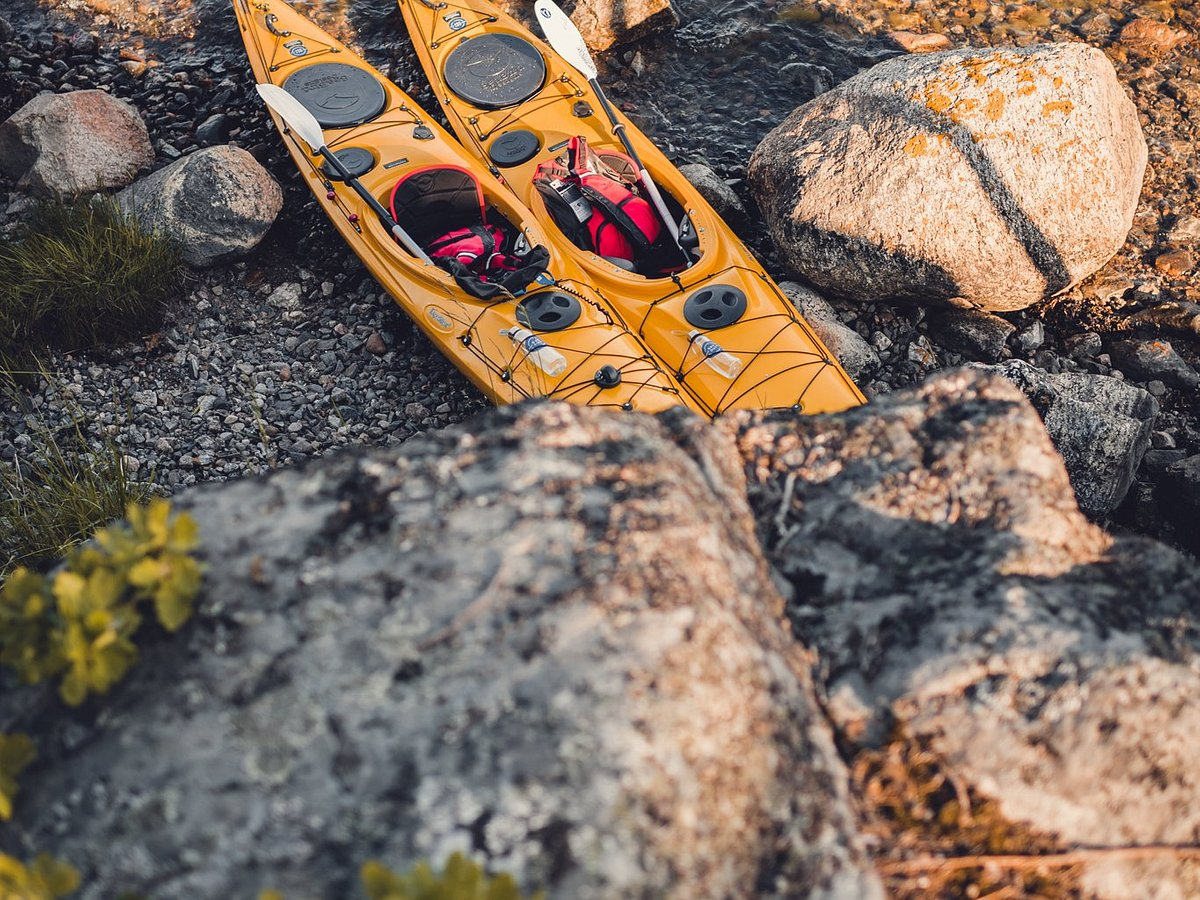
Kayak's "Get Out There" campaign aimed to inspire wanderlust among its audience. Through vibrant visuals, the ads showcased breathtaking destinations, from serene beaches to bustling cityscapes. Each advertisement carried a clear message – the world is vast, and every place holds a new experience waiting to be uncovered. The digital-first campaign was embedded with interactive tools: a user could click on an ad and immediately be led to flight and hotel options for the showcased destination.
Kayak's "Get Out There" tourism campaign was a bold statement in the increasingly digital world of travel planning. By implementing an aggressive multi-channel strategy that reached over 20 million users, Kayak achieved a 12% increase in app downloads within the first quarter of the campaign's launch.
- Social Media Blitz: With targeted ads across Facebook, Instagram, and Twitter, they reached the millennial demographic, seeing a 30% growth in social media engagement.
- Influencer Partnerships: Collaboration with travel influencers provided authentic voices that resonated with potential travelers, resulting in a 15% increase in user-generated content tagged with their campaign hashtag.
- Interactive Website Features: A special landing page offered personalized travel suggestions, driving an 18% increase in site visits.
Campaign 9
Travel Yourself Interesting - Expedia
Expedia’s creative travel ad campaign took a playful and humorous angle. The core message was simple: traveling makes you a more interesting person. Ads featured individuals recounting bland, everyday experiences, juxtaposed with their far more intriguing travel tales. One memorable ad showed a man boring his friends with tales of his lawn maintenance, only to later captivate them with stories of his trek in the Amazon Rainforest.
Expedia's "Travel Yourself Interesting" campaign became a sensation for its humorous take on self-improvement, leading to a 10% growth in global bookings during the campaign period.
- Television Commercials: The humorous ads were broadcasted in key markets, reaching an estimated audience of 50 million, with a 20% increase in brand recall.
- Digital Engagement: Interactive online quizzes and social media challenges contributed to a 25% spike in website traffic.
- Partnership with Travel Bloggers: Engaging bloggers added credibility and a personal touch, resulting in a wider reach and deeper connection with the target audience.
Campaign 8
The Airbnb Concerts - Airbnb
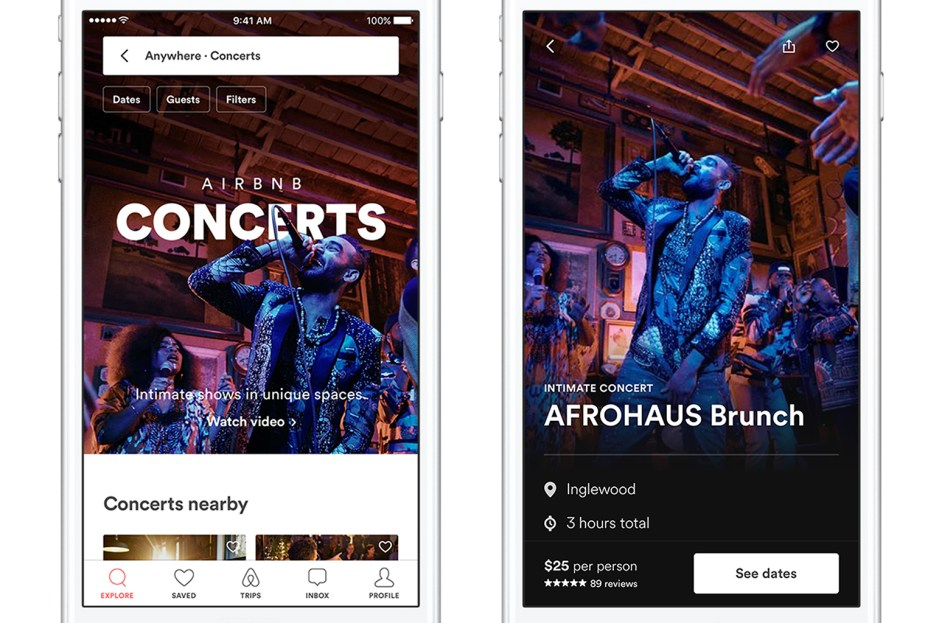
Airbnb wanted to emphasize that travel isn’t just about where you stay, but what you experience. This campaign married unique Airbnb accommodations with intimate live music performances. Think of a jazz concert in a historic New Orleans mansion or an indie rock performance in a sleek Tokyo loft. The campaign was about moments and memories, providing travelers not just a place to sleep but an experience to cherish.
Airbnb's "The Airbnb Concerts" was a revolutionary campaign that bridged the gap between travel, music, and community. Over 100 unique concerts were held in various Airbnb locations around the world, leading to a 40% increase in bookings among the participating properties.
- Live Concert Experiences: Hosting concerts in unusual Airbnb venues, such as treehouses and lofts, created unforgettable experiences, selling out 95% of the events.
- Social Media Engagement: Videos and photos from the concerts were shared widely, generating over 5 million views on YouTube and trending hashtags on Twitter.
- Influencer Participation: Collaboration with famous musicians and influencers added prestige and drew substantial media attention, reaching an estimated 60 million people through various channels.
Campaign 7
Do it for Denmark - Spies Travels
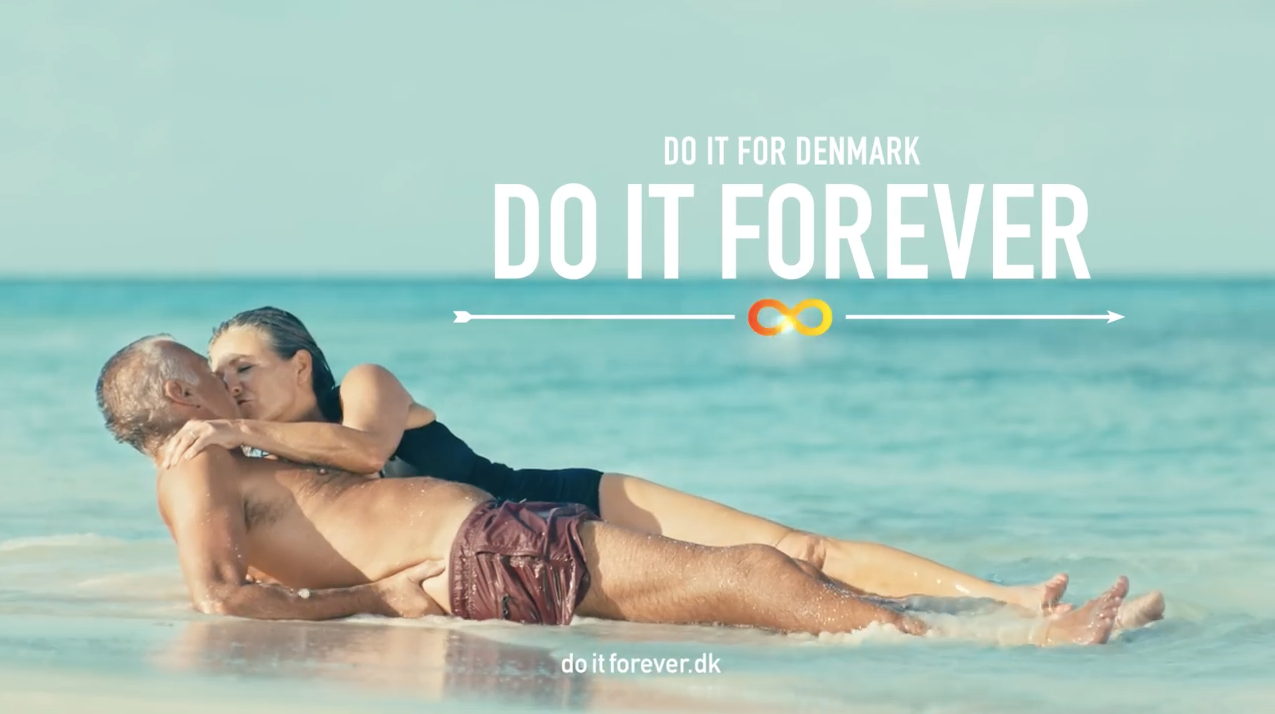
With Denmark experiencing a declining birth rate, Spies Travels crafted a cheeky and bold campaign suggesting that Danes should travel more to romantic destinations to boost their chances of conceiving. The campaign videos humorously implied that being in a relaxed vacation mode away from the daily grind might lead to increased intimacy among couples, and thus, increase the country's birth rate.
Spies Travels' bold and unconventional "Do it for Denmark" campaign focused on Denmark's low birth rate, cleverly encouraging couples to travel and procreate. This campaign's success was reflected in:
- Media Coverage: Featured in over 300 international media outlets, generating buzz worth millions in free advertising.
- Sales Growth: A 10% increase in holiday bookings within the campaign period, especially in romantic travel packages.
- Viral Video: The campaign video was viewed over 10 million times on YouTube in the first month alone.
- Awards and Recognition: The campaign won several marketing awards, establishing Spies Travels as a creative leader in the industry.
Campaign 6
Unborder - Scandinavian Airlines (SAS)
The "Unborder" campaign showcased the power of travel to transcend boundaries, be they physical, cultural, or psychological. Using visually stunning videos and images, SAS celebrated the global citizen's mindset. Scenes showcased diverse landscapes and cultures, intertwined with travelers from various backgrounds meeting, sharing moments, and understanding one another's worlds.
SAS's "Unborder" campaign celebrated cultural diversity and connectivity, aiming to break down borders in both a literal and metaphorical sense.
- Emotional Resonance: Surveys showed a 25% increase in positive brand perception among those exposed to the campaign.
- Global Reach: Multi-language content ensured an international reach, connecting with audiences in over 30 countries.
- Influence on Travel Patterns: The campaign contributed to a 7% growth in international flight bookings through SAS.
- Social Media Engagement: User-generated content and shared stories reached over 5 million social media users, strengthening community engagement.
Campaign 5
Spend Your Days Off - Project: Time Off
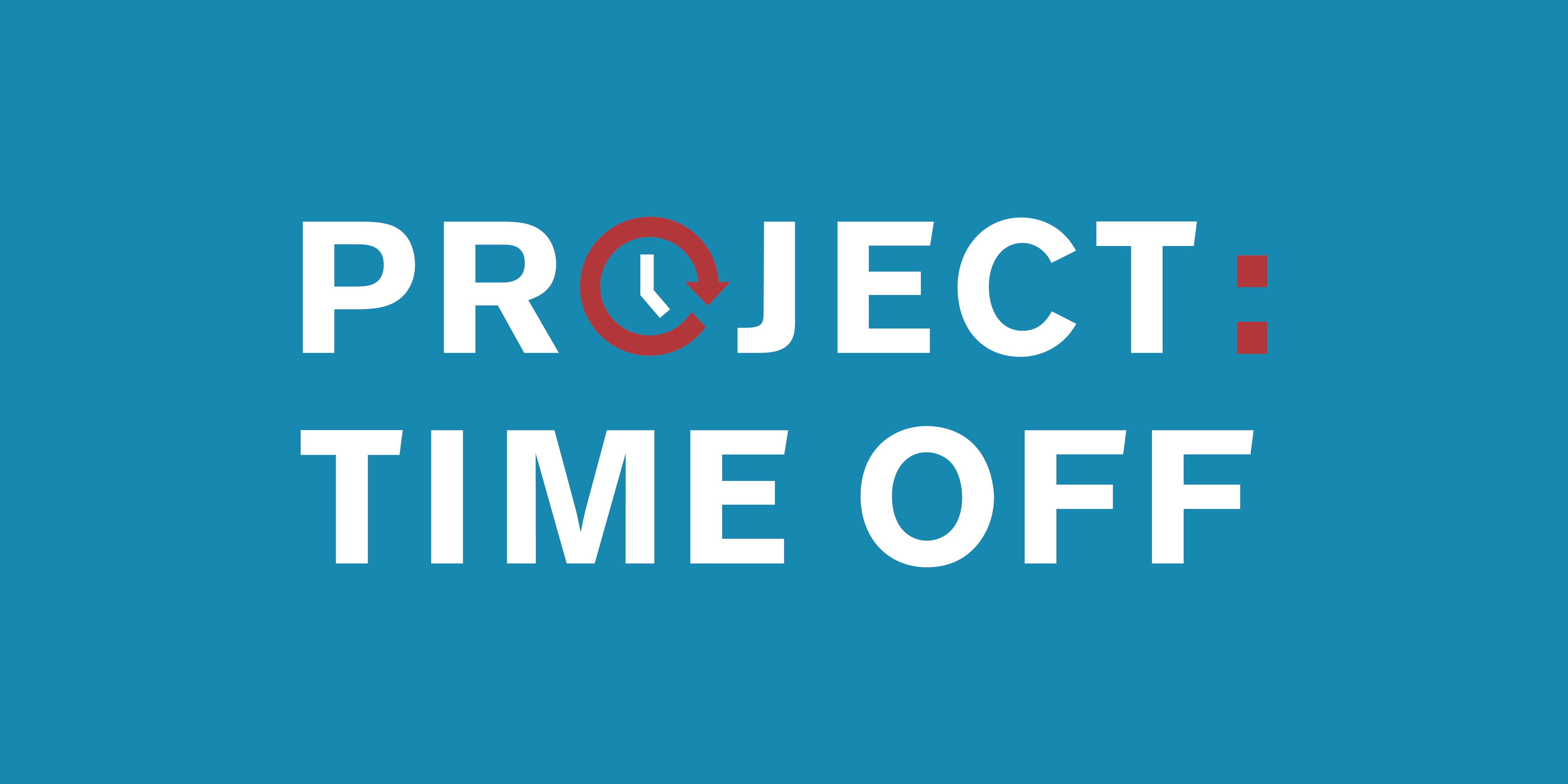
Addressing the widespread issue of burnout and the tendency of many individuals, especially in high-pressure jobs, to skip vacations, this campaign was a clarion call to prioritize well-being. Using a mix of stark statistics about unused vacation days and heartwarming content showing families and individuals rejuvenating through travel, the campaign's central message was clear: Time off is essential, not just a luxury.
The "Spend Your Days Off" campaign from Project: Time Off tackled a significant societal issue, encouraging people to value their vacation time and prioritize well-being.
- Impact on Public Opinion: The campaign reached over 100 million people, contributing to a shift in public opinion about the importance of taking time off.
- Partnerships with Major Brands: Collaboration with several travel and lifestyle brands increased the campaign’s visibility, contributing to a 15% increase in associated travel package sales.
- Social Media Activism: Through hashtags and viral challenges, the campaign mobilized social media users, generating over 1 million shares and comments.
- Research Integration: By incorporating research data on work-life balance, the campaign positioned itself as an authoritative voice, leading to numerous mentions in major media outlets.
Campaign 4
You’re Not You When You're Hungry - Snickers Australia
A delightful twist on Snickers' global campaign message, the Australian edition juxtaposed the idea of being 'hungry and irritable' with the fatigue of long travels. Strategically placed in airports and travel hubs, ads humorously showcased how hunger could transform a calm traveler into a frantic, disoriented mess, suggesting that a Snickers bar could save the day.
Travelers, already familiar with the global "You're Not You When You're Hungry" slogan, appreciated the localized twist and situational humor. The relatability of being hungry and irritable during travels struck a chord.
- Location-specific Advertising: By targeting travelers at airports, Snickers saw a 15% increase in sales within these locations during the campaign.
- Social Media Impact: Shareable content reached 2 million online engagements within the first two weeks.
- Brand Alignment: Maintained Snickers' global campaign message, resulting in a 10% rise in brand recognition among the travel audience.
Campaign 3
Live There - Airbnb
Instead of being a mere tourist, Airbnb's "Live There" campaign invited travelers to live like locals. It showcased real Airbnb hosts sharing genuine experiences with guests — from cooking together to exploring hidden neighborhood gems. The campaign was a departure from cliched travel ads, focusing on authentic local interactions over touristy hotspots.
Airbnb's "Live There" encouraged travelers to immerse in local cultures, shifting focus from accommodations to experiences.
- User Engagement: The campaign’s app features increased user interaction by 20%, enabling travelers to customize their experiences.
- Global Reach: Spanned 18 different markets, contributing to a 12% increase in international bookings.
- Media Partnerships: Collaborations with travel magazines and influencers created a 25% uplift in media coverage and online discussions about Airbnb's experiential travel offerings.
Campaign 2
Shot on iPhone 6 - Apple
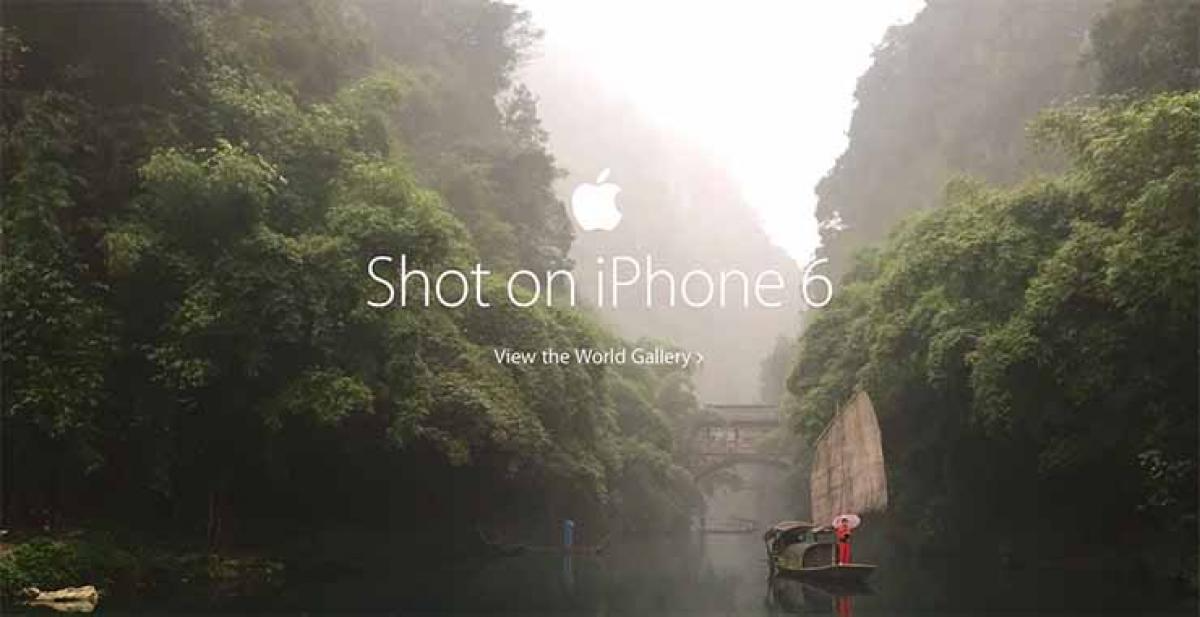
Apple showcased the powerful camera of its iPhone 6, not through technical jargon, but by spotlighting stunning user-generated travel photos taken on the device. Billboards, print ads, and digital campaigns proudly displayed these images with the caption "Shot on iPhone 6," turning everyday users into celebrated photographers.
Apple's "Shot on iPhone 6" brilliantly transformed travel photography, showcasing breathtaking landscapes captured on the iPhone.
- User-generated Content: Over 10,000 user submissions in the first month, creating a vast community of iPhone photographers.
- Sales Impact: A 9% increase in iPhone 6 sales was attributed directly to the campaign during its running period.
- Awards and Recognition: Several accolades for marketing excellence affirm Apple's position as an innovator in both technology and marketing.
- Influence on Industry: The campaign set a trend in mobile photography, with other brands following suit.
Campaign 1
It's More Fun in the Philippines - Department of Tourism Philippines
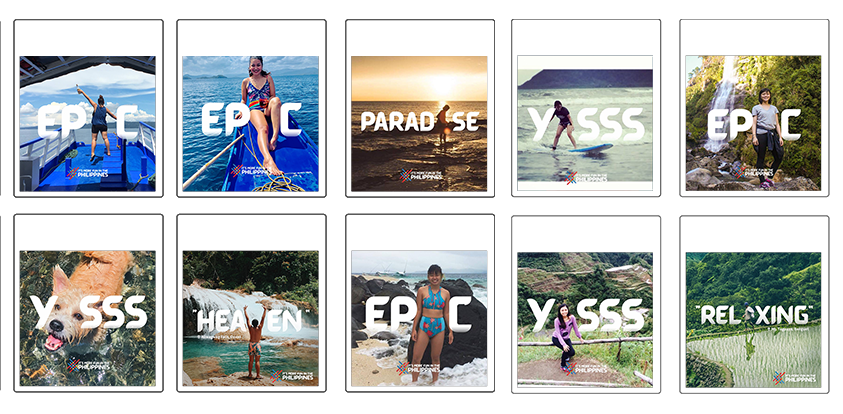
This vibrant campaign used catchy slogans, colorful visuals, and infectious local music to promote the Philippines as a top travel destination. It showcased everything from the country's pristine beaches and natural wonders to its rich cultural festivities and the warmth of its people.
The slogan "It's More Fun in the Philippines" became an anthem for both locals and travelers. It captured the heart of what the Philippines offers — an unparalleled blend of beauty, culture, and hospitality. The country saw a significant surge in tourist arrivals, rejuvenating local businesses and attractions. The slogan found its way onto merchandise, social media trends, and even local parlance, truly marking the campaign's success in engraining itself into the global traveler's psyche.
- Tourism Growth: A staggering 20% increase in international tourist arrivals in the year following the campaign's launch.
- Economic Impact: An estimated $1 billion boost to the local economy, benefiting various sectors tied to tourism.
- Social Media Virality: The hashtag #ItsMoreFunInThePhilippines trended worldwide, with over 5 million uses on various platforms.
- Cultural Promotion: The campaign promoted local culture and natural beauty, creating a sustainable and responsible tourism model.
What Makes a Travel Advertisement Successful?
To sum up, creating impactful travel advertisements involves much more than attractive visuals or catchy phrases. Successful tourism advertising:
✔ Clearly communicates its message
An impactful travel marketing campaign starts with clarity. Viewers shouldn't struggle to grasp the ad's main idea or intent. Each message must be direct and simple, answering the viewer’s subconscious question "Why should I visit this destination?"
✔ Emotionally resonates with viewers
Emotionally charged tourism campaigns are often the most memorable. According to industry research, ads with strong emotional components are twice as likely to be shared socially and lead to a 23% increase in sales.
✔ Builds trust
Authenticity builds trust, a cornerstone for best destination marketing campaigns. According to Nielsen, 70% of travelers trust opinions and genuine experiences shared by real visitors more than branded content.
✔ Prioritizes visual storytelling
Powerful visuals remain central to compelling travel commercials. The human brain processes visual information 60,000 times faster than text, proving visuals as indispensable in effective advertising.
What Types Of Tourism Ads Engage Potential Travelers Best?
The best travel campaigns speak to different moments of the user journey: planning, booking, exploring. Successful examples include interactive travel advertisement formats:
✔ In-app travel stories
In-app travel stories are short, visual, and easy to consume. They help travelers discover destinations, promotions, or services right inside the app. This format increases time spent in the app and supports user retention. Brands use stories to:
- share local tips
- limited-time offers
- emotional travel narratives.
✔ Dynamic tourism campaigns
Whether it’s a special deal for summer trips or content tailored to families or solo travelers, dynamic content feels relevant. These campaigns perform better because they respond to user intent, not assumptions.
✔ Mini-games
Mini-games introduce a playful way to explore destinations or access rewards. Simple mechanics like “Fortune Wheel” or “Choose Your Route” make travel feel interactive. Gamification increases user activity and purchase readiness, especially when paired with discounts or promo codes.
We focused on these ad types because they solve common marketing problems: low engagement, fast churn, and ad fatigue. Each one creates a richer experience — not just more clicks.
Break Away From The Common Marketing Tactics: Try In-App Campaigns
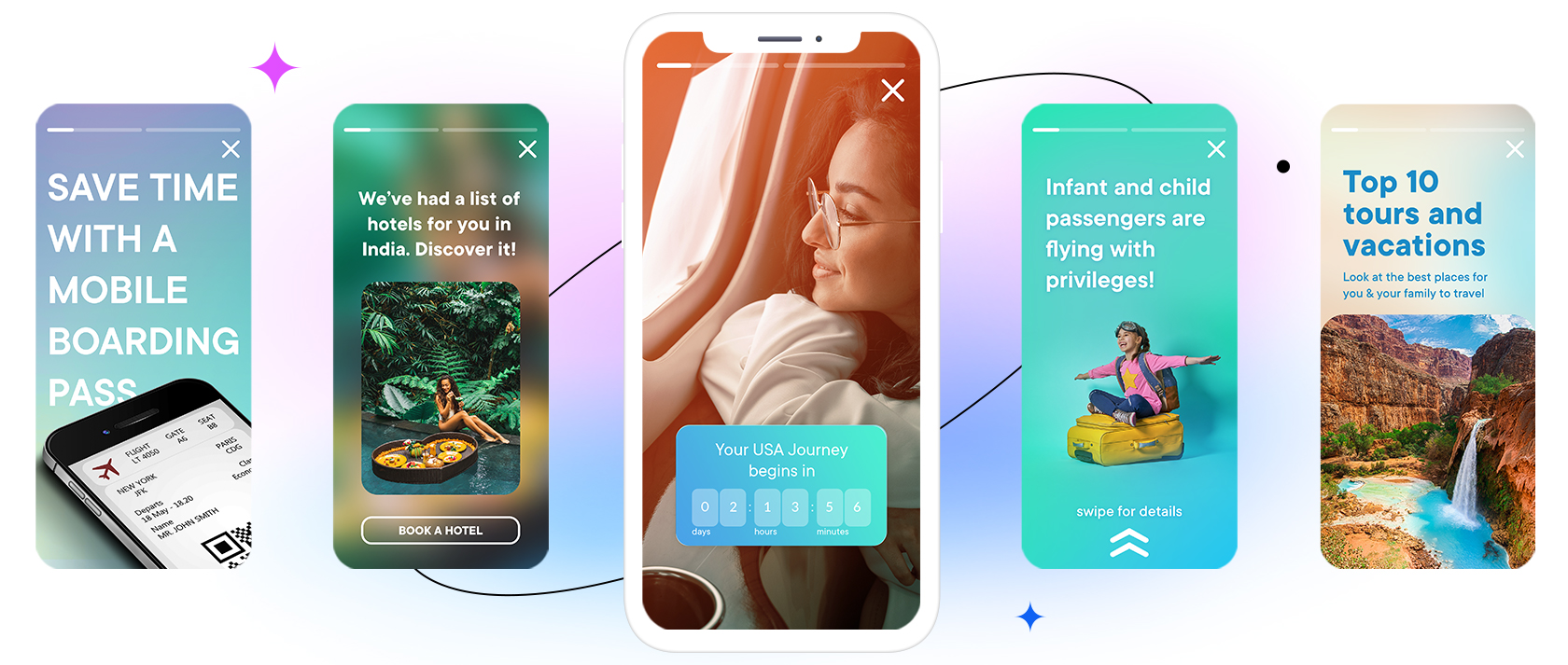
One look at the top travel campaigns we've explored showcases a truth that cannot be ignored: individuality is a cornerstone of successful marketing. From Airbnb emphasizing local experiences to the vibrant charm of Philippine adventures, brands that present a unique, authentic message are the ones that resonate most powerfully with audiences.
As a brand, how do you craft a message that stands out in a saturated market? It's about making it personal. And in the digital age, personalization comes from interactive, engaging, and relatable content.
Increase user engagement with interactive in-app campaigns in your travel app with InAppStory. We take your user engagement and essential mobile metrics under control with our digital toolkit. But why does this matter for travel marketing?
- Immersive Experiences: Showcase your destinations with full-screen visuals and engaging narratives. Let your potential travelers experience a 'sneak peek' of their journey right from their mobile devices.
- Real-Time Engagement: With features like polls, sliders, and quizzes, you can gauge traveler preferences instantly. Want to know if they prefer beach holidays over mountain trekking? Just ask!
- Tailored Recommendations: Using the engagement data, offer personalized travel packages or deals that cater to individual preferences. If a user frequently interacts with beach holiday stories, send them a special offer on a seaside resort package!
- User-Generated Content: Encourage travelers to share their experiences through stories within your app. There’s nothing more convincing than real travelers sharing authentic experiences.
- Stay Updated: Travel advisories, new destination launches, or special discounts – share time-sensitive information instantly through Stories.
InAppStory empowers you to create a dialogue, making your marketing efforts a two-way street. Using our all-in-one engagement tool, your travel brand can achieve a unique voice, one that listens as much as it speaks.
FAQ
How do travel agencies choose the right audience for a campaign?
Segmentation is the starting point. Agencies often split audiences by intent (dreaming, planning, booking), then layer demographics (families, solo travelers, retirees) with psychographics (luxury seekers vs. budget explorers). The most effective campaigns map content to these stages and mindsets, ensuring every touchpoint feels relevant.
What makes a travel campaign sustainable instead of short-lived?
Campaigns with long-tail impact usually integrate into the broader customer journey. Instead of running a one-off promotion, they link awareness ads to retargeting flows, loyalty perks, and community engagement. For travel brands, this means thinking beyond “get the booking” toward “create a repeat traveler.”
How do marketers balance brand building with direct response in tourism advertising?
It’s tempting to focus only on last-click ROI, but tourism is a trust-driven industry. The best campaigns allocate budget across both: emotional, brand-level storytelling to build preference, and tactical performance campaigns to convert. Marketers who measure lift in brand searches alongside bookings tend to outperform those chasing short-term clicks alone.
How can smaller agencies test travel marketing ideas before scaling?
Lean testing is key. Instead of launching a multi-channel push, agencies can A/B test messaging in one channel (like Instagram Stories or email subject lines). Once winning creative emerges, it’s worth scaling across channels. This approach minimizes wasted spend and builds confidence in the idea.
What metrics matter most when comparing tourism campaigns?
Beyond CTR, marketers should watch cost per acquired booking, share of returning visitors, and average revenue per traveler influenced by the campaign. Benchmarks vary, but campaigns that lift repeat engagement usually deliver the strongest ROI, even if their first-click results look modest.

